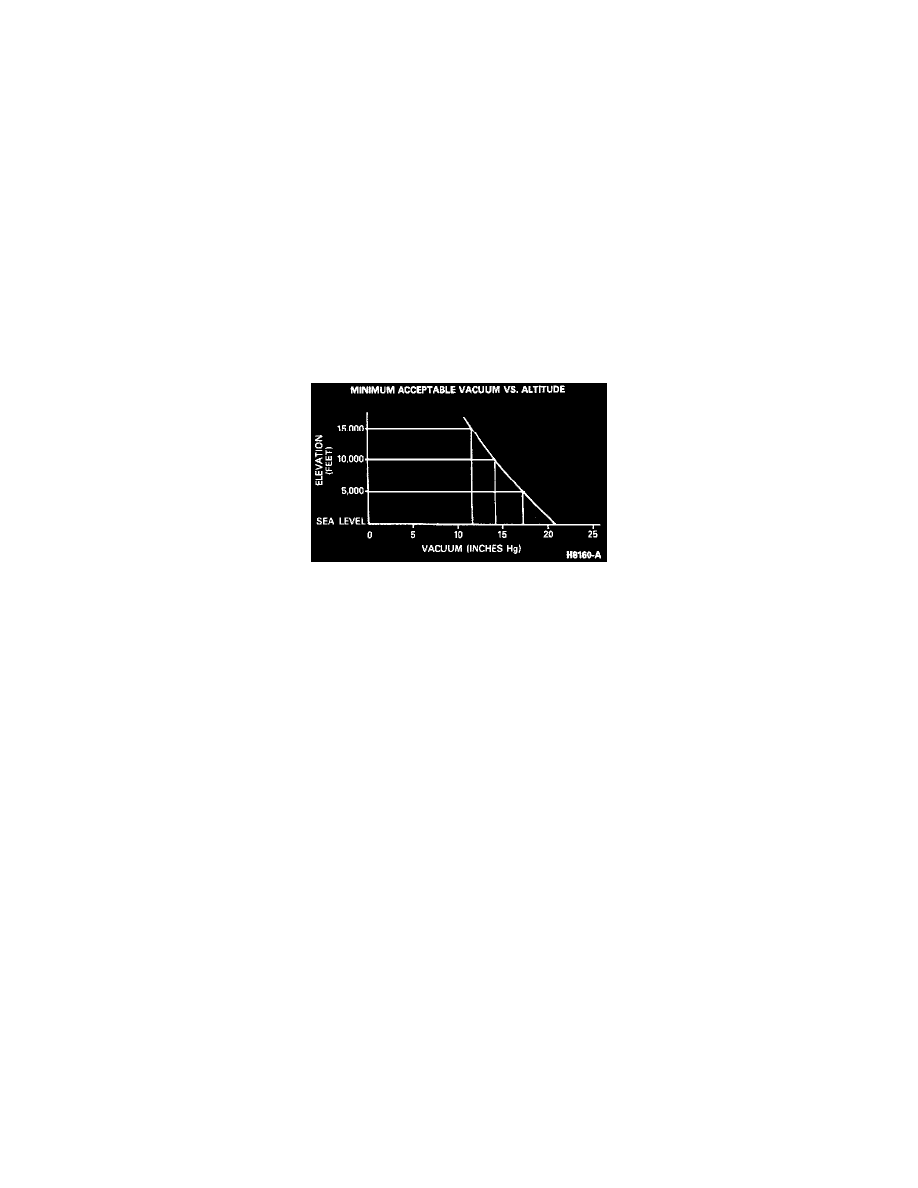F 350 4WD Pickup V8-7.3L DSL Turbo VIN F (1994)

Vacuum Pump: Testing and Inspection
A-1 Condition Isolation
^
Block the wheels and apply the parking brake.
^
Place the transmission in PARK or NEUTRAL.
^
Key ON engine running.
^
Disconnect the low-vacuum switch. Run engine at normal idle speed. Apply brakes.
^ Does brake warning light illuminate?
YES -- Condition related to the brake hydraulic system.
NO -- Condition related to the vacuum pump. Go to A2. See: A-2 Vacuum Pump Output
A-2 Vacuum Pump Output
Vacuum VS Altitude Chart
^ Disconnect the vacuum pump hose from the brake booster and insert a vacuum gauge. Rotunda Model 059-00008 or equivalent, in the hose end.
Run the engine at normal curb idle and check vacuum. Gauge should read 70kPa (21 inches Hg) at sea level within 30 seconds (refer to graph for
vacuum at other elevations).
^ Is vacuum at or above specified level?
YES -- Go to A4. See: A-4 Vacuum System Check
NO -- Go to A3. See: A-3 System Integrity
A-3 System Integrity
^ Check gauge and connections for leaks.
^ Check pully fit-to-shaft.
^ Check that engine curbe idle rpm is at specifications.
^ Repeat procedure in step A2, vacuum pump output test. See: A-2 Vacuum Pump Output
^ Is vacuum at or above specified level?
YES -- Go to A4. See: A-4 Vacuum System Check
NO -- Replace vacuum pump. See: Service and Repair
A-4 Vacuum System Check
^ Reconnect the vacum gauge hose with a T-fitting and connect vacuum gauge so gauge is located near pump inlet.
^ Run engine at curb idle speed. The maximum allowable vacuum drop to be 10kPa (3 inches hg) from the specified level of vacuum described in
step A2, vacuum pump outlet Test. See: A-2 Vacuum Pump Output
